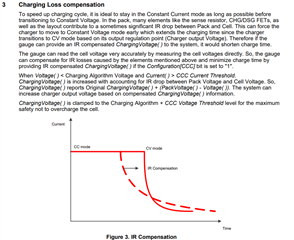Hello Forum
I needed more clarity on charge loss compensation parameters, CCC current threshold and CCC voltage threshold. The knowledge given in BQ4050 User manual is not helping me. I'm working on 2S Li-Ion battery with 6800mAh capacity, maximum charging voltage at 8.4V. System maximum charging current is 4A.




